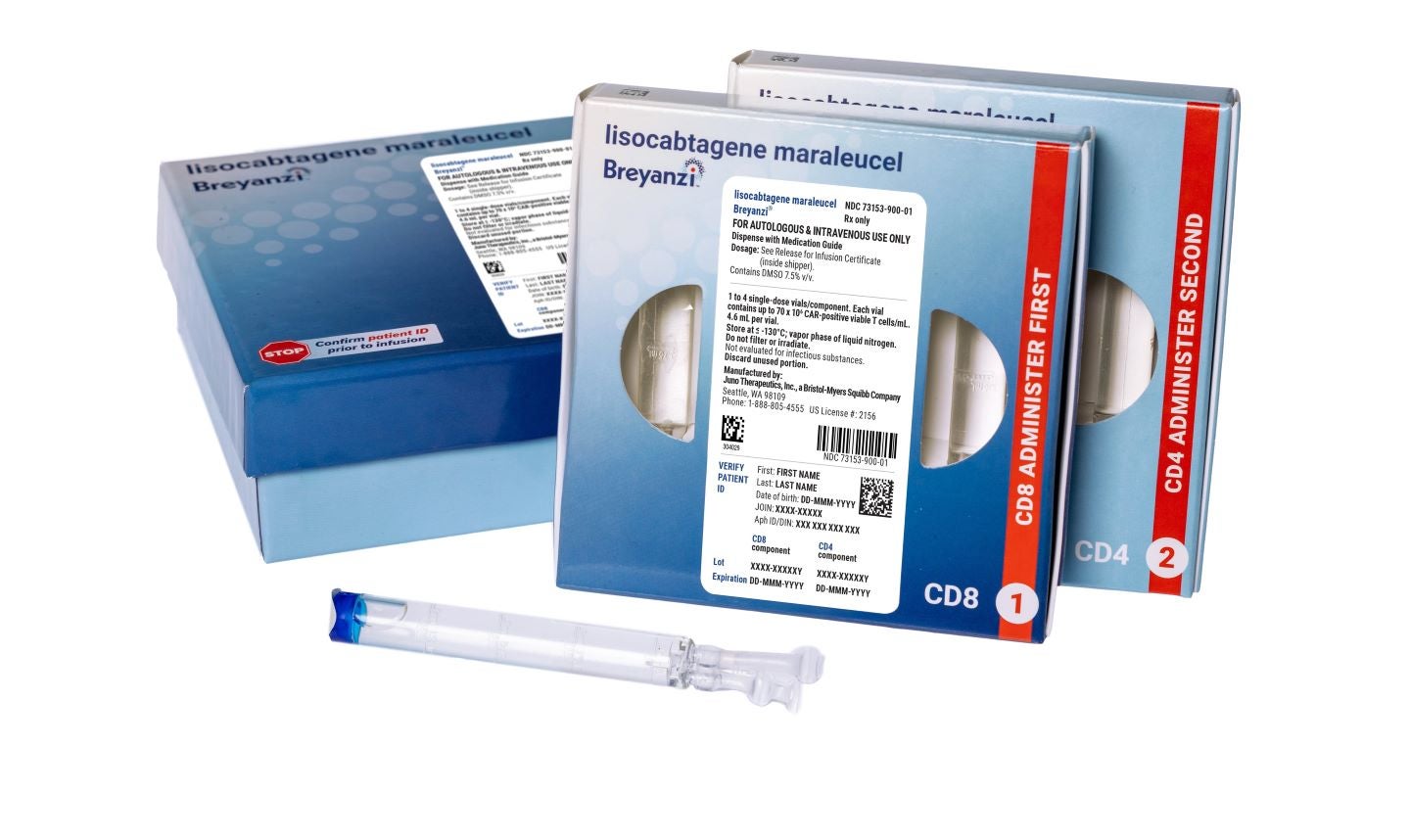
Pharma DECODED
Previous edition: 16 May 2024
Share article
Get the full version straight to your inbox.
Exclusive access to our best-in-class data & intelligence
Subscribe now
KRAS inhibitors: The next frontier beckons
There has been several developments in the KRAS inhibitor space, shaping the KRAS inhibitors of the future.

Although KRAS and its links to cancer were discovered decades ago, the characteristics of its protein structure were thought to make it “undruggable”.
KRAS is a gene that provides instructions for making a protein called K-Ras, which is part of the RAS/MAPK pathway. As the most frequently mutated oncogene, KRAS has been a target of cancer scientists for decades, but the lack of accessible drug-binding sites kept it from being a druggable target.
This changed when scientists from the University of California San Francisco developed a KRAS G12C inhibitor in 2013, tapping into a targetable switch II pocket within the KRAS protein structure. Switch II pocket is a region where inhibitors can block the activity of G12C. This breakthrough is significant given that KRAS G12C mutations are found in approximately 13% of non-small cell lung cancer (NSCLC) patients.
It then took nearly 10 years until the approval of Bristol Myers Squibb’s (BMS’s) Krazati (adagrasib) and Amgen’s Lumakras (sotarasbib), both of which are KRAS G12C inhibitors indicated to treat NSCLC. Their FDA approvals, which occurred in 2021 and 2022, respectively, were a breakthrough for the scientific community.
Soon afterwards, many other pharmaceutical companies began to develop their own KRAS-targeting drugs and therapeutics. The potential sales with these drugs are a big driver of development for companies, considering Krazati and Lumakras are forecast to reach combined sales of up to $3 billion in 2029, according to a GlobalData analysis.
The next frontier in the NSCLC space appears to be drugs that go beyond targeting the G12C domain and can treat other types of cancers, even potentially cross the blood-brain barrier. “This is the decade for RAS,” says Shubham Pant, professor of Gastrointestinal Medical Oncology at the MD Anderson Cancer Center, Houston, Texas.
Crossing the blood-brain barrier
Asfar Azmi, leader of the Molecular Therapeutics Research Program at Karmanos Cancer Institute in Detroit, Michigan, explains that Krazati has shown early signs of some central nervous system (CNS) activity in ongoing trials. However, in completed studies, patients with active, untreated brain metastases have been usually excluded from participation, meaning little is known about the CNS efficacy of Krazati.
This is significant due to the amount of NSCLC patients who present with brain metastasis at the time of diagnosis. “About 40% of lung cancer patients have brain metastasis. That's a big number,” says Azmi.
“Now, if you have a drug that can cross the blood-brain barrier as being shown by adagrasib, and to some extent sotarasib as well, then that would definitely be a game changer. [You] would now involve the 40% of patients who were earlier neglected or ignored in these trials,” Azmi adds.
Amgen and BMS are not the only companies with active programs in this space. AstraZeneca has developed a molecule called AZD4747, a potent and selective inhibitor of KRAS G12C that is designed to cross the blood-brain barrier.
In a presentation at the European Laboratory Research & Innovation Group’s (ELRIG’s) Research & Innovation 2024 conference in Manchester, UK, Jason Kettle, senior scientific director at AstraZeneca, said that AZD4747 has demonstrated high CNS exposure in dogs and primates. He concluded that the molecule “is uniquely positioned to treat CNS metastases relative to approved agents based on monkey positron emission tomography (PET) data.”
Azmi added that chemists designing KRAS inhibitors may aim for compounds that penetrate the blood-brain barrier and exhibit brain activity.
Moving beyond G12C
The replacement of the amino acid glycine at position 12 on KRAS leads to mutations that have been dubbed G12C, G12D, G12R, or others, depending on which amino acid replaces the glycine. Krazati and Lumakras both target KRAS G12C, which is a prominent mutation seen in NSCLC. However, certain cancers such as pancreatic cancer most commonly have the G12D mutation in the KRAS gene.
“Pancreatic cancer is one of the high priorities. It's a deadly disease. There is no cure for it. Now 80–90% of patients with pancreatic cancer have KRAS mutations, with the most prominent being G12D,” says Azmi.
Redwood City, California-based Revolution Medicines is taking a broader approach and developing a pan-RAS inhibitor, RMC-6236. The drug is a multi-selective non-covalent inhibitor designed to treat patients with cancers driven by a wide range of common RAS mutations. Pan-RAS inhibition means that all RAS isozymes co-expressed in the tumour cell population are targeted by a single inhibitor to block constitutively activated RAS regardless of the underlying mutation.
Combination therapies
Despite the efficacy, a KRAS G12C inhibitor by itself is not a simple, guaranteed solution. KRAS G12C inhibitor monotherapies have demonstrated limited clinical efficacy due to primary and acquired resistance mechanisms. Therefore, even if the treatment initially appears to work, the cancer can relapse.
Multiple combinations of KRAS G12C inhibitors with other targeted therapies, such as receptor tyrosine kinase (RTK) and mitogen-activated protein kinase (MEK) inhibitors, are being investigated in clinical trials to overcome the resistance, demonstrating promising efficacy.
For example, in April 2024, BMS reported positive data from its Phase I/II KRYSTAL-1 study evaluating Krazati plus Erbitux (cetuximab), an epidermal growth factor receptor (EGFR) inhibitor developed by Eli Lilly. The trial met its primary endpoint, with 34% of the 94 metastatic colorectal cancer (CRC) patients reaching a median progression-free survival of 6.9 months. The FDA accepted a supplemental new drug application for the combination treatment in February 2024 for previously treated KRAS G12C-mutated locally advanced or metastatic CRC for priority review, with a Prescription Drug User Fee Act (PDUFA) date set for June 21, 2024.
“Combination is the way to go forward. You cannot kill a tumour by just blocking KRAS. But what that combination is has to be very cautiously evaluated,” Azmi added.
KRAS in the adjuvant space
Krazati and Lumakras are currently approved for use in metastatic NSCLC after cancer progression on chemotherapy and immunotherapy. However, new inhibitors are now being developed in the early cancer space, and away from primary treatments. “The success in the lung [cancer] area has propelled the field to explore more and has given us innovators. Not just small molecule drugs, but now vaccines,” says Azmi.
Pant is leading a clinical trial testing an adjuvant vaccine ELI-002 2P, developed by Boston, Massachusetts-based Elicio Therapeutics, with the potential to prevent the relapse of KRAS-mutated pancreatic cancers.
In the trial (NCT04853017), patients with pancreatic and colorectal cancer who were considered to be at high risk of relapse received a maximum of 10 doses of the ELI-002 vaccine targeted toward KRAS G12D and G12R mutations. T cell responses were seen in 84% of all patients and in 100% of those in the two highest-dose cohorts, including those who received the recommended Phase II dose of 10mg. The data from this trial has led to a Phase II trial, which is currently ongoing.
Cancer vaccines as an adjuvant treatment can stimulate the immune system to recognise and attack cancer cells after primary treatment like surgery or chemotherapy. Pant says there is a high risk of relapse in this setting, but the potential for effecting a change is also high. “I think that's where we can truly achieve the cure,” says Pant.
Latest news

FDA approves Bristol Myers Squibb's Breyanzi for follicular lymphoma
The approval is based on results from the open-label, global, multi-centre, single-arm Phase II TRANSCEND FL clinical trial.

Takeda's dengue vaccine obtains WHO prequalification
The TAK-003 vaccine targets all four virus serotypes.

FDA rejects label expansion for Dynavax's hepatitis B vaccine
The US agency rejected the expanded use of Dynavax’s vaccine for adults on haemodialysis, citing insufficient efficacy and safety data.

Tracking the opioid lawsuit settlements amidst calls for oversight
The US National Opioid Settlement is distributing more than $54 billion to communities grappling with the opioid crisis.

Vanda Pharmaceuticals reports positive data from motion sickness trial
In the trial, only 10.4% and 18.3% of the subjects reported vomiting on the 170mg and 85mg doses, respectively.

Moleculin begins NIH-funded Phase II glioblastoma treatment trial
The primary goal of the study is to measure progression-free survival.

Allucent receives grant for decentralised Covid-19 vaccine trial
The company received the award to conduct a trial assessing correlates of protection following Covid-19 vaccination.
In our previous edition

Pharma Decoded
Circular RNA: Vaccines, therapeutics and biomarkers could be revolutionised
15 May 2024

Pharma Decoded
Sanofi to make €1bn biomanufacturing investment in France
14 May 2024

Pharma Decoded
RAPT terminates Phase II trials for lead candidate following clinical hold
13 May 2024
Newsletters in other sectors
Aerospace, Defence & Security
Automotive
Banking & Payments
Medical Devices
Oil & Gas
Travel and Tourism
Search companies, themes, reports, as well as actionable data & insights spanning 22 global industries
Access more premium companies when you subscribe to Explorer


